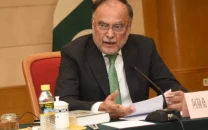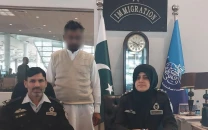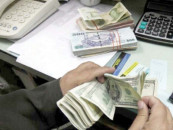Valley of tears
Kashmiris have shown exemplary courage, are standing against the furious waters and helping one another

Valley of tears
Another Kashmiri journalist and also a friend, Iftikhar Gilani, based in Delhi, has called the recent floods an “apocalypse”. Around 2,600 villages have been affected and 280 people have died. The dead are still being counted. Since the water levels have yet to recede completely, the scale of damage to human life and economy has yet to be assessed.
Official apathy reached new heights. When the floods began, the administration soon lost contact with the south of Kashmir. The DC in Srinagar couldn’t contact anyone in Anantnag. The alarm bells were ringing, but the government hardly noticed.
Srinagar was flooded and the south forgotten. Nothing was certain and stories circulated of many villages being washed away. The rains did not stop for nearly six days. As south Kashmir was under water, the government asked the people not to panic.
“This is an unprecedented situation and we are doing the best we can under the circumstances,” Chief Minister Omar Abdullah wrote on Twitter. “Please don’t panic, we will reach you, I promise.” Unfortunately, Omar Abdullah did not reach anyone.
Gilani wrote that the waters were neither a cloudburst nor a flash flood. The River Jhelum started rising slowly and steadily due to the rains that lashed Kashmir from September 1 onwards.
On September 5 and 6, south Kashmir was inundated. The government took no precautions until the waters came to central Kashmir and Srinagar city on September 7. The floodgates remained unmanned. There was no mobilisation to patrol bunds or have sandbags ready.
What did not help was that over the past 60-plus years, most of the canals and flood channels in the city have been blocked in the name of development.
After seeing the crisis unfold, I requested both Bukhari and Gilani to write for our paper so that we, too, could highlight what was happening. Most Pakistani media, focused on Imran Khan and Nawaz Sharif, have ignored this story.
Bukhari wrote that Kashmir continues to reel under the catastrophe that hit on September 7. The floods have left the valley in tatters.
Within India, attempts were being made to dehumanise Kashmiris in the name of exclusivist nationalism. Sadistic pleasure was drawn from the colossal damage.
No doubt that Indian defence forces rescued people at many places, but this was portrayed as a favour. India’s national TV channels debated over whether the army’s efforts would generate sympathy for the army!
Gilani wrote about a former director of India’s public broadcaster Doordarshan, Farooq Nazki, who stood on the roof of his house in Shivpora, which borders the Indian Army’s 15th Corps Headquarters, and wailed for help.
Narendra Modi was undertaking an aerial tour of the area at the time and before the communication system across Kashmir was blacked out, Nazki sent out a desperate message “Modiji, mujhay aur meri family ko bachaiye.” No one helped.
At the same time, a senior DIG rank police official and his guards were gesturing frantically from the ground, begging for an airlift as helicopters circled above them. A woman at a relief camp wailed as her two-year-old child had been left behind while she was being rescued. The stories are endless.
After watching people marooned and crying helplessly, Srinagar-based young lawyer Sajjad Mohiuddin used his savings to purchase a boat for Rs250,000 from Delhi. Another Rs26,000 were spent to transport it to Srinagar airport. Within past three days, Sajjad and Shujaat Bukhari have rescued 450 people from Lal Chowk, the sunk city centre, with this single boat. Kashmiris have shown exemplary courage, are standing against the furious waters and helping one another, but it will take years for Kashmir to rebuild. The government has not declared this a national calamity and has reservations about international aid organisations working here.
While Srinagar was flooding, Prime Ministers Modi and Nawaz Sharif made offers of assistance to each other. So far, Pakistan has done little else to help the people of Kashmir.
Published in The Express Tribune, October 6th, 2014.
Like Opinion & Editorial on Facebook, follow @ETOpEd on Twitter to receive all updates on all our daily pieces.














COMMENTS
Comments are moderated and generally will be posted if they are on-topic and not abusive.
For more information, please see our Comments FAQ